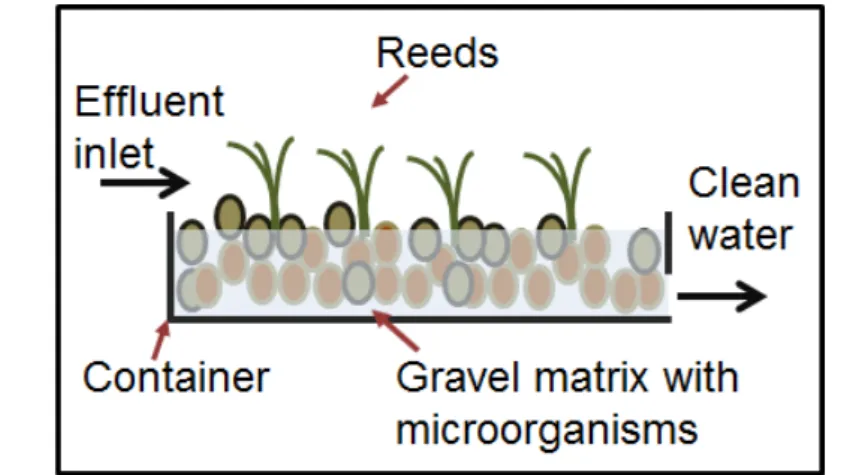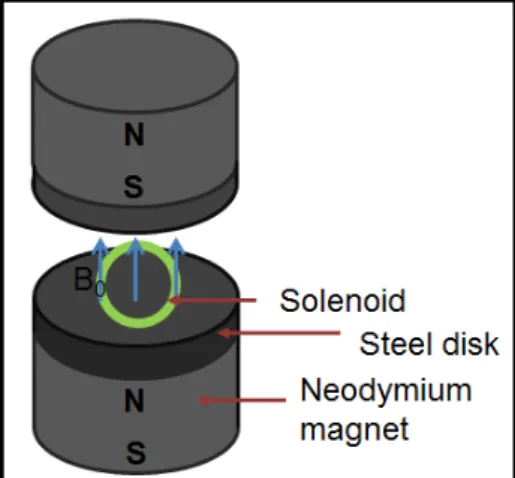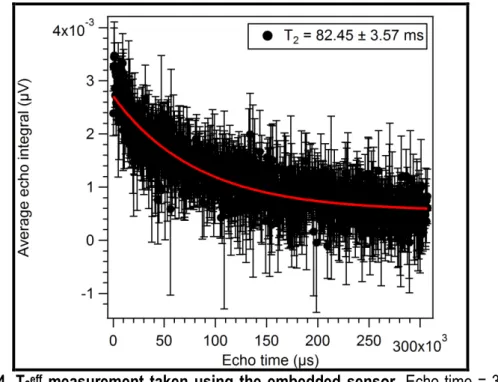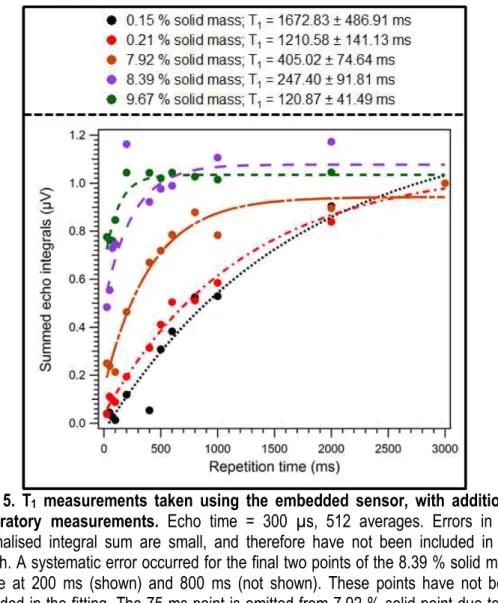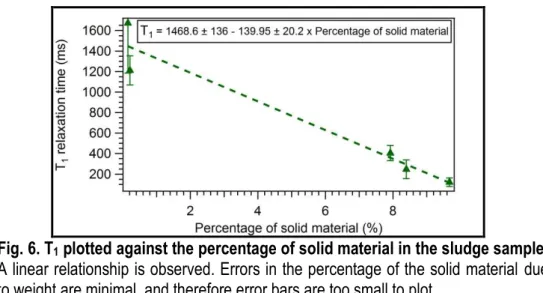Lakes, reservoirs and ponds, vol. 8(1): 52-65, 2014
©Romanian Limnogeographical Association
ADVANCES IN CLOG STATE MONITORING FOR USE
IN AUTOMATED REED BED INSTALLATIONS
Theodore HUGHES-RILEY1, Michael I. NEWTON1, J. Beau W.
WEBBER2, Jaume PUIGAGUT3, Enrica UGGETTI3, Joan GARCIA3,
Robert H. MORRIS1
1 The Nottingham Trent University, Nottingham, United Kingdom (+44 01158 483123) 2 Lab-Tools Ltd., Canterbury Enterprise Hub, University of Kent, Canterbury, Kent, United Kingdom;
(+44 07805 437 241)
3 GEMMA—Group of Environmental Engineering and Microbiology, Department of Hydraulic, Maritime and Environmental Engineering, Universitat Politècnica de Catalunya-BarcelonaTech,
Barcelona, Spain (+34 93 401 62 00) Email: rob.morris@ntu.ac.uk
Abstract
Constructed wetlands are a popular form of waste-water treatment that have proliferated across Europe and the rest of the world in recent years as an environmentally conscious form of waste water treatment. The ability to monitor the conditions in the bed and control input factors such as heating and aeration may extend the lifetime of the reed bed substantially beyond the ten year lifetime normally reached. The Autonomous Reed Bed Installation (ARBI) project is an EU FP7 initiative to develop a reed bed with automated control over input parameters based on readings taken from embedded sensors. Automated remedial action may improve bed treatment efficiency, and prolong the life of the bed and avoiding the need to refurbish the bed, which is both time consuming and costly. One critical parameter to observe is the clog state of the reed bed, as this can severely impact on the efficiency of water treatment to the point of the bed becoming non-operable. Magnetic resonance (MR) sensors can be a powerful tool in determining clogging levels, and has previously been explored in the literature. This work is based on a conference paper (2nd International Conference "Water resources and wetlands", 2014) and details magnetic sensors suitable for long-term embedding into a constructed wetland. Unlike previous studies this work examines a probe embedded into a wetland.
Keywords: constructed wetlands, waste water, magnetic resonance, clogging, sensor, monitoring
1. INTRODUCTION
the bed will over time integrate with its surrounding ecosystem. As such these systems have gained popularity and have proliferated across the globe. The basic design is uncomplicated, where a gravel matrix is used to create a porous structure for reeds to grow in. The reed root and rhizome network provides a substrate where microorganisms can grow as biofilm on the bed media. Under optimal conditions these microorganisms remove approximately 90 % of pollutants from waste water, with the remaining pollutants being dealt directly by the plants.
Effluent is then trickled through the reed bed and will come out the other side with a number of undesirable components removed, such as ammonia and phosphorus (Fig. 1). Effluent is not exclusively domestic sewage with reed beds being employed to filter and purify water for wastewater in mines as well as landfill leachate and air strip run-off (Adeola et al. 2009; Cooper, 2007).
Fig. 1. Basic schematic of a sub-surface reed bed. A gravel matrix has reeds planted in it and effluent is flown through. A combination of the reeds and microorganisms remove unfavourable material from the effluent, resulting in clean water.
Once operational a reed bed ideally should require little maintenance. After effluent flow has begun, the simplest design can allow for a wetland to operate with no external interference for many years: original predictions estimated a lifetime of a bed to be in excess of 50 years (Conley et al. 1991) however practical experience has seen lifetimes as short as 10 years (Griffin et al. 2008).
Automated Reed Bed Installation (ARBI) project, an EU FP 7 funded initiative to design an automated constructed wetland module. The ability to control the environment in the reed bed may extend lifetime, and possibly increase efficiency.For example, reed bed efficiency decreases in the winter months as it is a less favourable environment for the microorganisms and reeds (Kadlec&Wallace, 2009).
The main limiting factor to a beds lifetime is that over time the pores in the gravel matrix become clogged with microorganisms and particulate matter, severely reducing the reed beds efficiency to treat water, and ultimately rendering it inoperable (Rousseau et al., 2005). The process of reconditioning the bed after such a time involves removing the bed material (gravel) and either replacing or washing it (Nivala et al., 2012). This is both time consuming and costly. Indirect measures for clogging assessment include the analysis of accumulated solids in filter media (Caselles-Osorio et al., 2007), system hydrodynamics by means of tracer tests (Bowmer, 1987) and hydraulic conductivity measurements (Knowles et al., 2010; Pedescoll et al., 2009). However, acting upon a prohibitively clogged bed can only be done in a timely and efficient manner if the internally clogging conditions of the reed bed can be monitored and understood. Work presented here will look at monitoring clogging levels in reed beds. Sensors will be fitted to each module to monitor the clogging level, oxygenation, and temperature of each bed. This information will be fed into a control system which will determine where and when action is needed.
In a laboratory environment it has been shown that the magnetic resonance (MR) relaxation parameters T1 and T2eff are sensitive to the level
of clogging on extracted wetland samples (Morris et al. 2011; Shamim et al. 2013). MR utilises nuclear spin which is an intrinsic quantum property. Spins align in a magnetic field and are excited with a radio frequency coil, this both moves the spins into a plane perpendicular to the magnetic field, and results in the spins precessing. Precession of the spins within the coil induces a current; this is the signal that is collected (Rabi et al. 1938; Bloch, 1946). Diverse manipulation of spins allows for the collection of different information about a substance.
Relaxation deals with excited spins returning to a thermal equilibrium state; T1 (spin-lattice) relaxation deals with spins returning to
the same orientation as the magnetic field, and T2 (spin-spin) relaxation
regards precessing spins falling out of phase with one-another. T2eff,
discussed in this work, regards spin dephasing where various factors are responsible, not just spin-spin interactions.
experienced in the reed bed (explored in model systems by Bencsik et al. 2013). MR sensors used in these studies are designed to detect protons (1H) and therefore most MR measurements taken on wetland sludge will be on the water component. However the MR relaxation behaviour of water will be different depending on other factors, such as the water containing particulate matter. Different relaxation behaviour can be extracted from T1
and T2eff data using a polyexponential fitting and may be utilized to
determine important factors for the reed beds health. The scope for using this to separating out components, such as biofilm has been explored to some extent elsewhere (Hughes-Riley et al. 2014b).
Various sensor designs have been investigated for their use with the ARBI module. A pilot study was also conducted using Earth’s field nuclear magnetic resonance (EFNMR; Hill-Casey et al. 2014 in press). T1 and T2eff
measured using EFNMR were sensitive to clog state, and the probe could be successfully embedded into a gravel matrix filled with water. However when attempts were made to embed the probe into a wetland module the surrounding ferrous cage introduced inhomogeneity to the localised Earth’s field, making measurements impossible. Building the outer case of a wetland module from a non-metal material is likely impractical at the size needed for sufficient treatment, making the use of EFNMR for the desired application non-ideal.
Unilateral magnet arrangements have been explored for this application in the laboratory, including using the stray field of an arrangement of four magnets and bar magnet (Hughes-Riley et al. 2014b; Hughes-Riley et al. 2014c under review; Hughes-Riley et al. 2014d). Unilateral designs are preferred over an internal volume design as they are less disruptive to the flow-path of effluent and cannot become physically clogged by gravel. The four-magnet sensor showed promise in a lab environment, however further development (unpublished) to deploy the sensor into a reed bed has been problematic. Signal intensity is not sufficient to take T2eff measurements in a timely manner. Another issue is that in its
current configuration only about 2 mm above the probe can be explored. This small volume (~1000 mm3) is not ideal as it may not be representative
of the health of the reed bed overall.
wetland and taken to a laboratory for investigation, here for first time MR measurements taken in situ from a reed bed are presented. This work also presents a brief study comparing clog state sensitivity of T1 and T2eff using a
Helmholtz permanent magnet arrangement of this design.
2. METHODS
2.1 Prototype constructed wetland for MR testing
A static wetland module was constructed at Nottingham Trent University with the express purpose of testing MR sensors (previously described elsewhere; Hill-Casey
et al. 2014 in press). An intermediately bulk container (1.02 m x 0.92 m x 0.90 m; DV
Containers Ltd, Wrexham, UK) was used as the basis of the module. The container was filled with gravel (average length = 9.6 mm; Travis Perkins Trading, Bulwell, UK), water, and had common reeds (Phragmites australis) planted in it, making the module a close representation of a real operational wetland (Fig. 2). The wetland did have an outlet pipe to allow for liquid to flow through; however this was not utilized during these experiments. Effluent was also not present in this system, as it would be in an operational wetland.
Fig. 2. An overhead photo of the prototype wetland at the Nottingham Trent University. The basis of the module was an IBC container.
2.2 MR sensor design
magnets (Fig. 3; height = 20 mm, radius = 17 mm; Magnet Monster, Flensburg, Germany). The magnets were separated by 20 mm (slightly over the magnet radius) and arranged with anti-parallel polarization. This created a region of homogeneous magnetic field where an eight-turn solenoid coil was installed.
The solenoid was attached to a tuning board with three capacitors, a 12 – 100 pF variable capacitor for matching (Johanson Manufacturing, New Jersey, USA) and a 12 – 100 pF variable capacitor and a single 55 pF fixed capacitor for tuning the resonant circuit to 13.87 MHz, the required frequency for the field generated. A slight modification was made to the circuit before the experiments comprising Fig. 7 as part of the ongoing improvement of the sensor. As the change was to the circuit only this will not have affected T1 or T2eff taken by the sensor.
The sensor had to be water-tightened so that it could be embedded into a wetland. Therefore the sensor was coated with a silicon elastomer potting compound (RS Components Ltd., Northhants, UK). Laboratory tests confirmed that this sufficiently water-tightens the sensor to allow for operation. This method is likely unsuitable for long term embedding due to impairment that may occur to the silicon coating over time or physical damage from motion during transport.
Fig. 3. Helmholtz sensor design. Magnets are separated by 20 mm, in the gap there is a homogeneous magnetic field in which the solenoid is installed. Steel disks are place on each magnet to reduce the field gradient.
2.3 Magnetic resonance protocol
Zealand) to collect magnetic resonance measurements. All measurements were taken using CPMG sequences (Meiboom & Gill, 1958). For T2eff
measurements a CPMG was taken with a single parameter set, and echo integrals were re-fit using Igor Pro v6.3 (WaveMatrics, Oregon, USA). For T1 measurements CPMG sequences were run with different repetition times.
A CPMG was used so that the echo train could be summed, reducing the number of repeat experiments needed. Summed echo integrals were normalised and then fitted to a mono-exponential curve. All errors specified for T1 and T2eff values are given as the error on the fitting provided by Igor
Pro.
The experiments shown in Fig. 7 used TNMR software and an Apollo spectrometer (Tecmag Inc., Texas, USA). Fittings were conducted using Matlab (The MathWorks, Inc., Massachusetts, USA) to provide the final T2eff values.
2.4 Sample preparation
Samples for additional laboratory validation experiments (ARM, Rugeley, UK) were stored in either a 50 mm section of acrylic tube (i.d. = 10 mm, o.d. = 12 mm) or a modified 2 ml syringe (BD Plastipak, Oxford, UK; i.d. = 9 mm, o.d. = 10 mm) filling most of the coil region of the sensor. To calculate the mass of the dry solids in each sample, samples were weighed, then dried in a convection oven (Binder, Tuttlingen, Germany) and finally re-weighed using an electronic balance (Type 120-4M, Kern & Sohn GmbH, Balingen, Germany).
3. RESULTS
Fig. 4 shows a T2eff measurement taken in the Nottingham Trent
later experiments showed that a time exceeding 5s would yield far superior results).
Fig. 4. T2eff measurement taken using the embedded sensor. Echo time = 300 µs, repetition time = 1000 ms, 2048 averages.
With the successful collection of a T2eff measurement validating the
use of the sensor in a reed bed, a T1 measurement was recorded, as shown in
Fig. 5. T1 measurements taken using the embedded sensor, with additional laboratory measurements. Echo time = 300 µs, 512 averages. Errors in the normalised integral sum are small, and therefore have not been included in the graph. A systematic error occurred for the final two points of the 8.39 % solid mass curve at 200 ms (shown) and 800 ms (not shown). These points have not been included in the fitting. The 75 ms point is omitted from 7.92 % solid point due to an equipment failure.
As expected, additional solid material (i.e. clogging) results in a shorter T1. The relationship between the T1 measurement and percentage of
solid material in the sludge has been plotted (Fig. 6). A linear relationship is observed. This is expected based on the work of Morris et al. 2011, where hydraulic conductivity was shown to have a linear relationship with T1
Fig. 6. T1 plotted against the percentage of solid material in the sludge sample. A linear relationship is observed. Errors in the percentage of the solid material due to weight are minimal, and therefore error bars are too small to plot.
As the T2eff time is short when compared to T1 time, it is unlikely
that T2eff will be a useful indicator of clog state in wetlands, and certainly
not the preferable gauge when using a sensor such as the one described in this work: T2eff is short due to poor field homogeneity of a permanent
magnet system. T2eff measurements take less time to collect than T1 as only
one, and not multiple CPMG measurements need to be made. As a result it might prove useful to be able to use a T2eff measurement as a rough gauge of
clog state when sensors are initially embedded into a system. Regardless, for completeness, a short laboratory study comparing T2eff to the percentage of
solid material in a sample was conducted and is presented in Fig. 7.
As expected T2eff is shorter for samples with a greater level of
clogging (Bencsik et al. 2013). While this relationship does exist the difference in T2eff for the clogged and unclogged states are small, varifying
that it is an unfavourable meassure of clog state on the presented sensor. The error on the gradient of the fitting in Fig. 7 is substantial. Error on T2eff values are given as being the error on the exponential fitting and is
generally minimal for clogged samples. Potenitial sources of error not accounted for here may be introduced by temperture effects however any temperture change would have been minimal (less than 5 °C). It is possible that errors in calculating the percentage of solid material may also contribute however this seems unlikely due to the superior linear fitting apparent in Fig. 6 (compared to that in Fig. 7). A better linear fitting could be obtained by repeating meassurements on different samples at other percentages of solid material.
4. CONCLUSION
An automated reed bed module will be able to use incorporated sensors to monitor the internal conditions of the bed and allow for real-time optimisation of environmental parameters by controlling factors such as aeration and heating. This should lead to an increased bed lifetime, and superior water treatment. The most important sensor is the MR probe as this is required to monitor clog state. An important development towards using these probes is to prove that sensors can work in situ, which has been shown for the first time for an MR probe in this work.
A short study exploring a comparison between T1 relaxation and
quantity of solids in samples has been conducted. As seen from previous studies increasing particulate matter results in shortening T1 values (Morris
et al. 2011).
T2eff has also been investigated. A small change in T2eff as a function
of solid material in a sample is evidenced. The change is far smaller than the relationship observed for T1 (about a factor of thirty more sensitive than
T2eff) when using a sensor of this type, confirming that T1 is the desirable
measurement to record when monitoring reed bed clog level.
ACKNOWLEDGMENTS
The authors would like to express gratitude to Dr. C. Trabi, Mr. F. Hill-Casey and Mr C.R. Bradley for their assistance in this study. This research was funded by the European Union's Seventh Framework Programme managed by the REA – Research Executive Agency http://ec.europa.eu/research/rea (FP7/2007_2013) under project reference 606326. The work has been supported by the following partners: ARM Ltd. (UK), Lightmain Ltd. (UK), OxyGuard International A/S (Denmark), TechnoSAM SRL (Romania).
REFERENCES
Adeola, S., Revitt, M., Shutes, B., Garelick, H., John, H. & Jones, C., 2009, Constructed wetland control of bod levels in airport runoff, International
Journal of Phytoremediation, 11(1), 1-10, DOI:
10.1080/15226510802363220.
Bencsik, M., Shamim, M.F., Morris, R.H. & Newton, M.I., 2013, Monitoring accelerated clogging of a model horizontal sub-surface flow constructed wetland using magnetic resonance transverse relaxation times, International Journal of Environmental Science and Technology,
178, 48-52, DOI: 10.1007/s13762-013-0336-7.
Bowmer, K.H., 1987. Nutrient removal from effluents by artificial wetland: influence of rhizosphere aeration and preferential flow studied using bromide and dye tracers. Water Reserach 21 (5), 591–599, DOI:
10.1016/0043-1354(87)90068-6.
Bloch, F., 1946, Nuclear Induction, Physical Review, 70, 460-473, DOI:
http://dx.doi.org/10.1103/PhysRev.70.460.
Caselles-Osorio, A., Puigagut, J., Segú, E., Vaello, N., Granés, F., García, D., García, J., 2007. Solids accumulation in six full-scale subsurface flow constructed wetlands. Water Reserach 41 (6), 1388–1398, DOI:
10.1016/j.watres.2006.12.019.
Conley, L.M., Dick, R.I. & Lion, L.W., 1991, An assessment of the root zone method of wastewater treatment, Research Journal of the Water Pollution Control Federation, 63(3), 239 – 247, available online:
http://www.jstor.org/stable/25043987 (accessed on 19/08/2014).
Cooper, P. 2007, The constructed wetland association UK database of constructed wetland systems, Water Science and Technology, 56(3), 1-6,
Carr, H. Y., & Purcell, E. M. 1954, Effects of diffusion on free precession in nuclear magnetic resonance experiments, Physical Review, 94(3),
630-638, DOI: 10.1103/PhysRev.94.630.
Hill-Casey, F., Hughes-Riley, T., Bradley, C.R., Newton, M.I., & Morris, R.H. 2014, Magnetic resonance relaxation measurements using earth’s field magnetic resonance to assess the clog state of constructed wetlands, Diffusion Fundamentals; in press.
Hughes-Riley, T., Newton, M.I., Webber, J.B.W., Puigagut, J., Uggetti, E., Garcia, J. & Morris, R.H. 2014a, Advances in Automated Reed Bed Installations, 2nd International Conference "Water resources and wetlands", 11 – 13 September 2014, Tulcea, Romania.
Hughes-Riley, T., Xu, Z., Hill-Casey, F., Newton, M.I. & Morris, R.H. 2014b, Using Unilateral Sensors to Assess the Clog State of Constructed Wetlands, 12th International Bologna Conference on Magnetic
Resonance in Porous Media (MRPM12), 9 – 13 February 2014,
Wellington, New Zealand.
Hughes-Riley, T., Webber, J.B., Newton, M.I. & Morris, R.H. 2014c, Magnetic resonance relaxation measurements using open-geometry sensors to assess the clog state of constructed wetlands, Diffusion Fundamentals; under review.
Hughes-Riley, T., Newton, M.I. & Morris, R.H. 2014d, Temperature dependence of magnetic resonance sensors for embedding into constructed wetlands, 1st International Electronic Conference on Sensors and Applications, 1-16 June 2014, DOI: 10.3390/ecsa-1-c006.
Griffin, P., Wilson, L. & Cooper, F., 2008, Proceedings of the 11th Int Conf. on Wetland Systems for Water Pollution Control, 1-7 November 2008, Indore, India.
Kadlec, R.H. & Wallace, S.D., 2009, Treatment Wetlands, CRC Press, FL, USA, 101p.
Knowles, P.R., Griffin, P., Davies, P.A., 2010. Complementary methods to investigate the development of clogging within a horizontal sub-surface flow tertiary treatment wetland. Water Reserach 44 (1), 320–330, DOI:
10.1016/j.watres.2009.09.028.
Meiboom, S., & Gill, D. 1958, Modified spin‐echo method for measuring nuclear relaxation times, Review of scientific instruments, 29(8), 688-691,
DOI: 10.1063/1.1716296.
Morris, R.H., Newton, M.I., Knowles, P.R., Bencsik, M., Davies, P.A., Griffin, P. & McHale, G. 2011, Analysis of clogging in constructed wetlands using magnetic resonance, Analyst, 136, 2283-2286, DOI:
Nivala, J., Knowles, P., Dotro, G., García, J., Wallace, S. (2012) Clogging in subsurface-flow treatment wetlands: Measurement, modeling and management. Water Research 46 (6), 1625–1640.
Pedescoll, A., Uggetti, E., Llorens, E., Granés, F., Garcia, D., García, J., 2009. Practical method based on saturated hydraulic conductivity used to asses clogging in subsurface flow constructed wetlands. Ecological Engineering 35 (8), 1216–1224, DOI: 10.1016/j.ecoleng.2009.03.016.
Rabi, I.I., Zacharias, J.R., Millman, S. & Kusch, P. 1938, A New Method of Measuring Nuclear Magnetic Moments, Physical Review, 53(4), 318-327,
DOI: 10.1103/PhysRev.53.318.
Rousseau, D.P.L., Horton, D., Vanrolleghem, P.A., De Pauw, N., 2005. Impact of operational maintenance on the asset life of storm reed beds. Water Science Technology 51(9), 243–250
Shamim, M.F., Bencsik, M., Morris, R.H. & Newton, M.I. 2013, MRI measurements of dynamic clogging in porous systems using sterilised sludge, Microporous and Mesoporous Materials, 178, 48-52, DOI:
